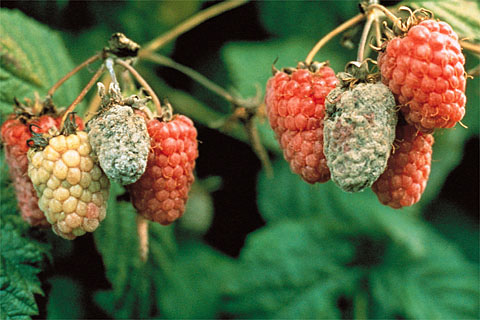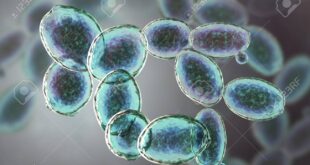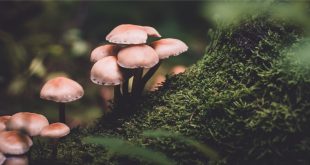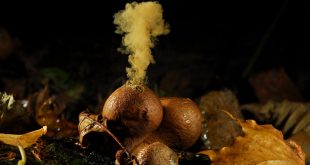Based on causal agents
- Infectious or biotic plant diseases.
- Non infectious or abiotic plant diseases or physiological disorder.
A. Infectious diseases
A disease that is caused by pathogens which can spread from a diseased to a healthy plant. They are caused by animate factors.
- Viral disease: Witches broom.
- Bacterial disease: Citrus canker.
- Fungal disease: Late blight of potato.
- Mycoplasma: Peach yellow.
- Viroid: Cadang cadang of Coconut.
- Nematode: Root knot.
- Actinomycetes: Scab of potato.
- Parasitic higher plants: By Cuscuta reflexa
- Protozoa
- Insects: Tungro of rice.
- Algae: Cephaleuros pathogen.
B. Non infectious disease
A disease that is caused by an environmental factor, not by pathogen is called non infectious disease. These are caused by inanimate factor.
- Too low or too high temperature.
- Lack or excess of soil moisture.
- Lack or excess of light.
- Lack of oxygen.
- Air pollution.
- Nutrients deficiency.
- Mineral toxicities.
- Soil acidity or alkalinity.
- Toxicity of pesticides.
- Improper agricultural practices.
- Thunderbolts or lightening.
Best safe and secure cloud storage with password protection
Get Envato Elements, Prime Video, Hotstar and Netflix For Free
Best Money Earning Website 100$ Day
#1 Top ranking article submission website
Based on degree of spread and severity
- Endemic
With reference to a disease, one that has a low incidence but which is constantly present in a particular geographic region. E.g. Potato wart disease (Synchytrium endobioticum) was endemic in Darjeeling. - Epidemic
With reference to a disease, one that displays a sudden increase in incidence in a particular geographic region. E.g Blast disease of rice. - Pandemic
A worldwide epidemic i.e severe destructive (all over the world). E.g Late blight of potato. - Sporadic
Very irregularly occur. E.g Angular leaf spot, blotch disease of cucumber.
Based on disease development
- Localized
Restricted to a small particular area or cell of plants. E.g leaf spot, anthracnose, citrus canker etc. - Systematic
Involves the whole plant. E.g Loose smut of wheat, downy mildew disease, rust disease, mosaic disease.
Based on natural perpetuation and mode of infection
- Soil borne
- Air borne
- Seed borne
Based on symptoms
Fungi cause local or gencral symptoms on their hosts and these may occur separately on different hosts, concurrently on the same host, or follow one another on the same host. In general fungi cause local or general necrosis or killing of plant tissues, hypertrophy and hypoplasia or stunning of plant organs or entire plants, and hyperplasia or excessive growth of plant parts or whole plants.
The most common necrotic symptoms are:
- Leaf spots: Localized lesions on host leaves consisting of dead and collapsed cells.
- Blight: General and extremely rapid browning of leaves, branches, twigs, and floral organs resulting in their death.
- Canker: A localized wound or necrotic lesion, often sunken beneath the surface of the stem of a woody plant.
- Root rot: Disintegration or decay of part or all of the root system of a plant.
- Damping off: The rapid death and collapse of very young seedlings in the seed bed or field.
- Basal stem rot: Disintegration of the lower part of the stem.
- Soft rots and dry rots: Maceration and disintegration of fruits, roots, bulbs, tubers, and fleshy leaves.
- Anthracnose: A necrotic and sunken ulcer like lesion on the stem, leaf, fruit or flower of the host plant.
- Scab: Localized lesions on host fruit, leaves, tubers, etc., usually slightly raised or sunken and cracked, giving a scabby appearance.
Almost all of the above symptoms may also cause pronounced stunting of the infected plants.
In addition, certain other symptoms such as leaf rust, mildews, wilts, and even certain diseases causing hyperplasia of some plant organs, such as clubroot, may cause stunting of the plant as a whole.
Symptoms associated with hypertrophy or hyperplasia, and distortion of plant parts include:
- Clubroot: Enlarged roots appearing like spindles or clubs.
- Galls: Enlarged portions of plants usually filled with fungus mycelium.
- Warts: Wart like protuberances on tubers and stuns.
- Witches’ brooms: Profuse, upward branching of twigs. Leaf curls–Distortion, thickening and curling of leaves.
In addition to the above, three groups of symptoms may be added:
- Wilt: Usually a generalized secondary symptom in which leaves or shoots lose their turgidity and droop because of a disturbance in the vascular system of the root or of the stem.
- Rust: Many small lesions on leaves or stems, usually of a rusty color.
- Mildew: Chlorotic or necrotic areas on leaves, stems, and fruits usually covered with mycelium and the fructifications of the fungus.
In many diseases, the pathogen grows or produces various structures on the surface of the host. These structures, which include mycelium, sclerotia, sporophores, fruiting bodies, and spores, are called signs and are distinct from symptoms, which refer only to the appearance of infected plants or plant tissues.
Thus, in the mildews, for example, one sees mostly the signs consisting of a whitish, downy growth of fungus mycelium and spores on the plant leaves, fruit, or stem, while the symptoms consist of chlorotic or necrotic lesions on leaves, fruit, and stem, reduced growth of the plant, etc.
 Plantlet The Blogging Platform of Department of Botany, University of Dhaka
Plantlet The Blogging Platform of Department of Botany, University of Dhaka






Thank you for your sharing. I am worried that I lack creative ideas. It is your article that makes me full of hope. Thank you. But, I have a question, can you help me?
A wonderful article. thanks a lot for sharing it